IPad development history
Apple's iPad was released by Steve Jobs in 2010 as a response to the question he posed, 'Is it possible to create a mix of iPhone and MacBook?'
At that time, many people would say 'No'. But after the iPad was released, Apple sold 3 million phones after 80 days and Steve Jobs probably had long known the answer to the problem.
How has the iPad tablet changed since it was first published in 2010?Join TipsMake.com to look at the history of iPad development through the following article!
Summary of Apple iPad models since launch
- Apple iPad (2010)
- Apple iPad 2 (2011)
- Apple iPad 3 (2012)
- Apple iPad 4 (end of 2012)
- Apple iPad mini (end of 2012)
- Apple iPad Air (2013)
- Apple iPad Mini with Retina screen (2013)
- Apple iPad Air 2 (2014)
- Apple iPad Mini 3 (2014)
- Apple iPad Pro (2015)
- Apple iPad Mini 4 (2015)
- Apple iPad Pro 9.7 (2016)
- Apple iPad (2017)
- Apple iPad Pro 10.5 (2017)
- Apple iPad Pro 12.9 (2017)
- Apple iPad (2018)
- Apple iPad Pro 11 (2018)
- Apple iPad Pro 12.9 (2018)
Apple iPad (2010)
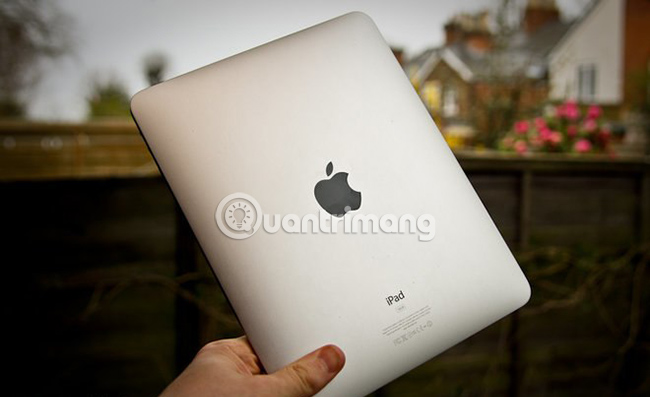
- CPU: 1GHz ARM Cortex-A8 (Apple A4)
- RAM: 256 MB
- Screen: 1024x768
- Model: WiFi and WiFi + 3G
- Capacity: 16GB, 32GB, 64GB
- Model number: A1219 (WiFi), A1337 (3G)
Published in January 2010, the first iPad offers an aluminum build with square edges - just like what you see on the current iPad Pro, although the newer models are much thinner. This iPad comes with 9.7 inch screen, about 13mm thick and weighs about 680g.
Model 2010 owns an Apple A4 processor of 1GHz speed and has 16GB, 32GB or 64GB storage capacity, and promises up to 10 hours of battery life. The starting price is $ 499 (11,582,000 VND) and includes accessories, including a keyboard dock, as well as a standard docking station to turn the iPad into a "great photo frame".
Apple iPad 2 (2011)

- CPU: 1GHz dual-core ARM Cortex-A9 (Apple A5)
- RAM: 512MB
- Screen: 1024x768
- Model: WiFi and WiFi + 3G
- Capacity: 16GB, 32GB, 64GB
- Model number: A1395 (WiFi), A1394 (3G GSM), A1394 (3G CDMA)
The second generation of the iPad was announced a year after the first version, with a 33% thinner body - only 8.8mm - and about 50g lighter, bringing the machine's weight to below 600g. Apple iPad 2 also has a new dual-core A5 chip, supposedly operating at twice the speed of the first version, with graphics card 9 times faster and the speaker repositioned.
The biggest difference between the iPad 2 and the original model is the camera. Apple iPad 2 has a front camera and rear camera, allowing FaceTime to call and video. This is quite basic compared to the current model, but is actually a 'loud echo' at that time.
Apple iPad 3 (2012)
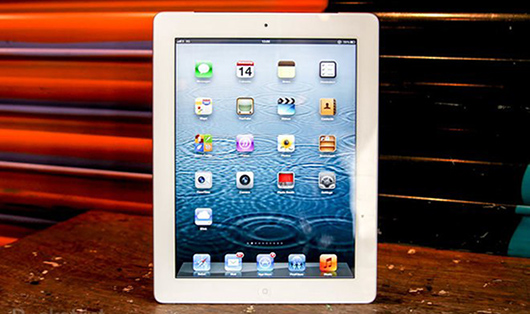
- CPU: 1GHz dual-core ARM Cortex-A9 (Apple A5X)
- RAM: 512 MB
- Screen: 2056x1536
- Model: WiFi and WiFi + 4G
- Capacity: 16GB, 32GB, 64GB
- Model number: A1416 (WiFi), A1430 (4G), A1403 (4G VZ)
The third generation iPad appeared in 2012, with the design still the same as its predecessor, but the screen technology is greatly improved. Apple calls it "Retina screen" (this phrase is still in use now) and it provides 4 times the number of pixels of iPad 2, as well as greater color saturation.
The iPad is equipped with a new A5X chip, with a graphics processor upgraded to a quad core and improved camera resolution - up from 1MP to 5MP. App Store dedicated applications amount to about 200,000 when this model launches and runs on iOS 6.
Apple iPad 4 (end of 2012)
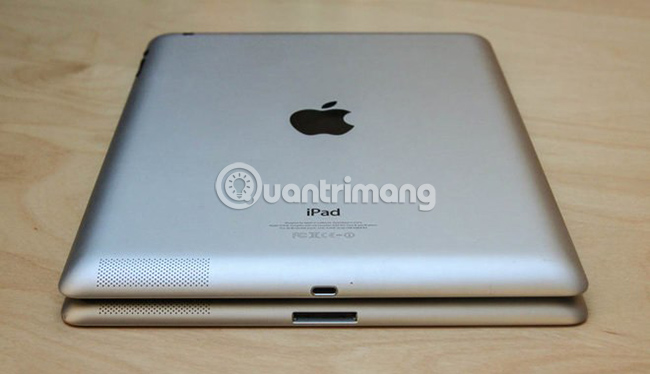
- CPU: Apple Swift 1.4GHz dual core (Apple A6)
- RAM: 1GB
- Screen: 2056x1536
- Model: WiFi and WiFi + 4G
- Storage capacity: 16GB, 32GB, 64GB, 128GB
- Model number: A1458 (WiFi), A1459 (4G), A1460 (4G MM)
Just 6 months after the iPad 3 was released, Apple announced the iPad 4. It's quite similar to the iPad 3, meaning it has a similar 9.7-inch Retina display, a metal structure, measuring 241.2 x 185.7 x 9.4mm and weighs 652g, but this iPad model removed the 30-pin dock connector and introduced Lightning.
IPad 4 screen is similar to iPad 3 (all Retina screens with a resolution of 2048 x 1536), but Apple has equipped the new iPad 4 A6X processor, supposedly twice as fast as iPad 3. iPad 4 also made a move to support dual-band WiFi and a new front-facing camera, switching from VGA to 1.2MPl.
Apple iPad mini (end of 2012)
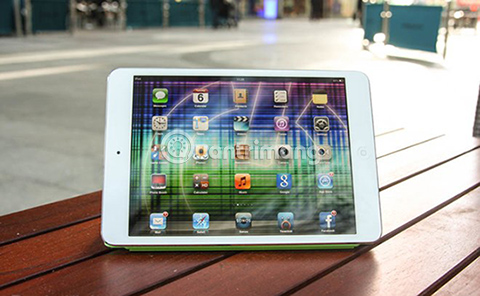
- CPU: 1GHz dual-core ARM Cortex-A9 (Apple A5)
- RAM: 512 MB
- Screen: 1024x768
- Model: WiFi and WiFi + 4G
- Capacity: 16GB, 32GB, 64GB
- Model number: A1432 (WiFi), A1454 (4G), A1455 (4G MM)
Apple launched the first iPad mini with iPad 4, marking the new 'territory' for the iPad. Keeping the high-quality metal structure, the iPad mini is considerably smaller and lighter than the standard iPad, measuring 200 x 134.7 x 7.2mm and weighing 308g - only half the weight of the first iPad model. . The bezel edges around the screen are minimized and Apple has programmed iOS to skip the times when asexual user presses a finger on the screen edge.
The mini iPad has more rounded and rounded edges than the original iPad, but only owns the iPad 2 resolution (screen size 7.9 inches - 1024 x 768 pixels - instead of Retina screen). The mini IPad also uses the A5 processor (which means it is not as powerful as the iPad 4). Hidden behind the iPad mini's small appearance are extremely powerful features.
Apple iPad Air (2013)
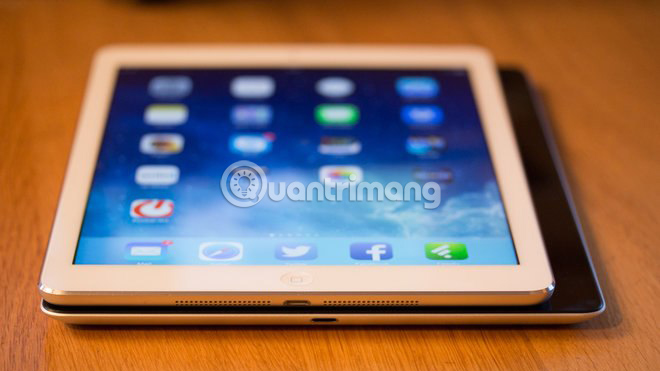
- CPU: Apple A7 w 64-bit 1.4GHz dual-core / Apple M7 motion-handling co-processor
- RAM: 1GB
- Screen: 2056x1536
- Model: WiFi and WiFi + 4G
- Capacity: 16GB, 32GB, 64GB, 128GB
- Model number: A1474 (WiFi), A1475 (4G)
Apple's fifth generation iPad is called the iPad Air and has a completely new design, with curved edges similar to iPad mini. Apple iPad Air is 20% lighter (only 469g), thinner (7.5mm) and also shorter than the iPad 4, creating a more portable device.
Apple iPad Air owns a 9.7-inch screen similar to the iPad 4, but Apple has reduced 43% of the bezel around the screen, making the viewing area larger. The iPad Air cameras are similar to iPad 4, but this model owns the A7 chip, has 64-bit architecture, allows faster autofocus, higher video frame rate, faster shooting and lots of Other features too.
Apple iPad Mini with Retina screen (2013)
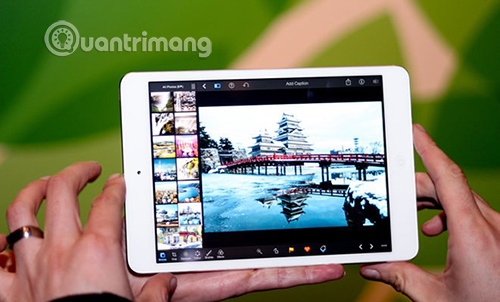
A year after the iPad mini launched, Apple introduced iPad mini with Retina screen. The design remains the same but the screen has moved from a resolution of 1024 x 768 pixels to a resolution of 2048 x 1536 pixels, making it the highest resolution among tablets of the same size.
This iPad mini model with Retina display is a bit thicker and heavier than the first iPad mini - 7.5mm instead of 7.2mm and 331g instead of 308g - but the design hasn't changed. Storage capacity includes 128GB option and Apple has also upgraded the chip to A7 - like the same processor found on iPad Air and iPhone 5S.
Apple iPad Air 2 (2014)
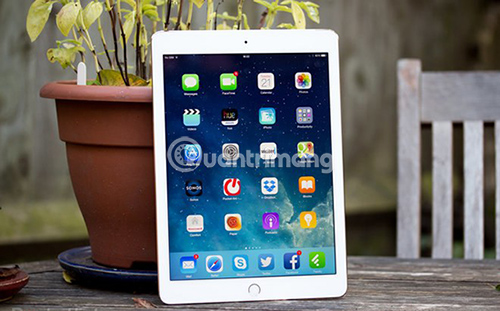
The second-generation iPad Air offers a similar design to the original iPad Air model but the thickness has dropped to 6.1mm, giving it the slimmest tablet title that can be purchased at that time. Apple iPad Air 2 is also lighter than the first generation iPad Air, which weighs only 437g.
Although the screen's size and resolution are still the same as the first iPad Air, Air 2 introduced an anti-reflective coating, while upgrading the A7 chip to A8X. The biggest change between Air and Air 2 is the introduction of Touch ID. Air 2 is the final product in the iPad Air series.
Apple iPad Mini 3 (2014)
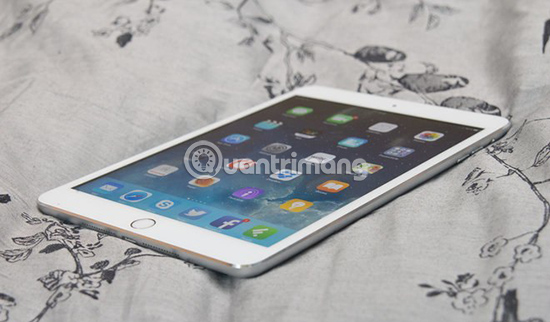
- CPU: Apple A7 w 64-bit 1.4GHz dual-core / Apple M7 motion-handling co-processor
- RAM: 1GB
- Screen: 2056x1536
- Model: WiFi and WiFi + 4G
- Capacity: 16GB, 64GB, 128GB
- Model number: A1599 (WiFi), A1600 (4G)
The mini IPad 3 came along with the iPad Air 2, but at that time, Apple quickly reduced its importance in the presentation and focused on the larger model. Design is still the same as iPad mini 2, although Apple has added Touch ID to iPad mini 3.
Apple iPad Mini 3 has no upgraded processor, no improved camera and no anti-reflective screen or WiFi faster than iPad Air 2. iPad mini 3 is a minor upgrade of the iPad series mini.
Apple iPad Pro (2015)
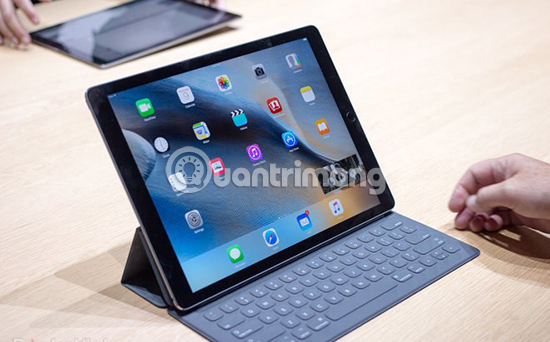
- CPU: Apple A9X 64-bit dual-core 2.26GHz
- RAM: 4GB
- Screen: 12.9 inches with a resolution of 2734 x 2048
- Model: WiFi and WiFi + Cellular
- Capacity: 32GB, 128GB, 256GB
- Model number: A1584 (WiFi), A1652 (4G)
The first Apple iPad Pro was launched in 2015, once again marking the new 'territory' for the iPad. Offering a huge "12" inch screen with a total of 5.6 million pixels and a refresh rate to help save energy, iPad Pro is a 'monster' in the tablet world. It has a 4-speaker audio setup (better than dual speaker setup on the iPad Air 2), allowing up to 3 times the volume and a 64-bit A9X chip (meaning iPad Pro is 1.8 times faster than iPad Air 2).
Besides high-end metal structure, the iPad Pro is 6.9mm thin with Smart Connector to connect a dedicated keyboard, allowing power and data transfer. Apple's first stylus was also introduced with the iPad Pro called Apple Pencil. It can be charged directly from the iPad Pro's Lightning port.
Apple iPad Mini 4 (2015)
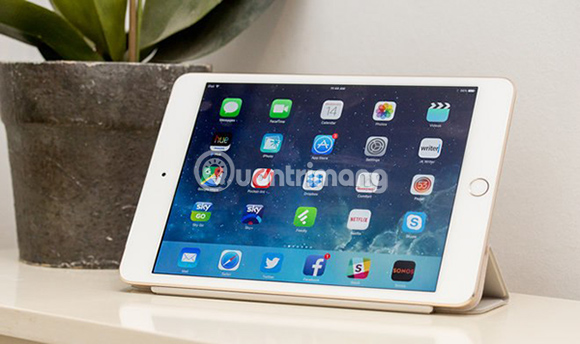
- CPU: Apple A8X w 64-bit quad core 1.5GHz / Apple M8 motion co-processor
- RAM: 2GB
- Screen: 2056 x 1536
- Model: WiFi and WiFi + 4G
- Capacity: 16GB, 64GB, 128GB
- Model number: A1538 (WiFi), A1550 (4G)
Apple iPad mini 4 was more successful than the iPad mini 3 in 2015, although no one knew later that this would be the last mini for a while. The mini iPad 4 is thinner and lighter than the iPad mini 3, equipped with a laminate screen, anti-reflective coating like Air 2.
Apple has also upgraded the iPad mini 4 chip to the A8 processor with the motion co-processor M8 and the resolution of the rear camera is also improved. In addition, the design is still the same as the previous iPad mini. Rumors of the iPad mini 5 have also appeared.
Apple iPad Pro 9.7 (2016)
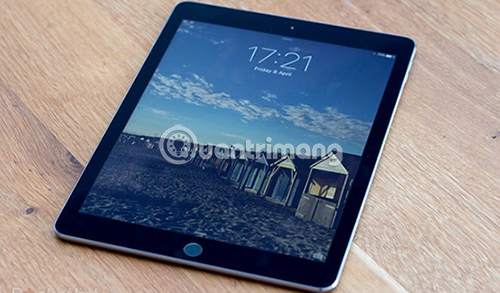
- CPU: Apple A9X 64-bit dual core
- RAM: 2GB
- Screen: 9.7 inches with a resolution of 2056 x 1536
- Model: WiFi and WiFi + Cellular
- Capacity: 32GB, 128GB, 256GB
- Model number: A1673 (WiFi), A1674 or A1675 (4G)
Many people believe that this iPad model will be called the iPad Air 3, but instead, it joins the iPad Pro line. This 9.7-inch device is called the iPad Pro 9.7, the smaller model of the 12.9-inch model debuted a year ago. The iPad 3 Air has the same thin aluminum structure and Touch ID fingerprint sensor, but comes with a new color option: Rose Gold.
The IPad Pro 9.7 has the same screen size and resolution as the iPad Air 2, but adds more than 25% color saturation, marking the start of Apple's True Tone technology - now available on iPhone models. Latest. The camera specifications are also upgraded for the iPad Pro 9.7 and have the same power as the larger 12.9-inch model, making it a considerably more powerful option than the Air 2 model it replaces.
Apple iPad (2017)
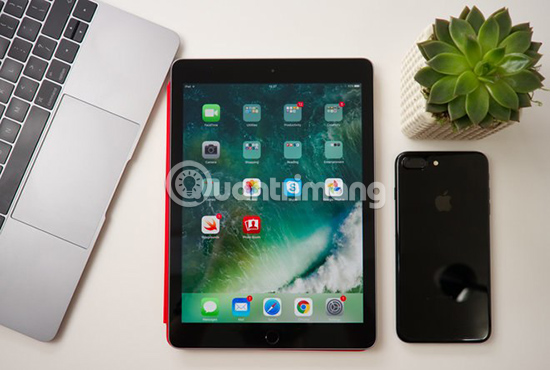
- CPU: Apple A9 64-bit dual-core 1.85Ghz
- RAM: 2GB
- Display: 2056 x 1536
- Model: WiFi and WiFi + 4G
- Capacity: 32GB, 128GB
- Model number: A1822 (WiFi), A1823 (4G)
This Apple iPad model was released quietly in March 2017, ranking on the iPad mini 4, but under the iPad Pro line. Basically, it is a model to replace the iPad Air 2, but Apple has removed the word "Air" in its name. This iPad model is similar in design to the iPad Air 2, although a bit thicker, but that is because this model lacks laminate anti-reflective screens.
Apple iPad (2017) also lacks True Tone technology, found on iPad Pro models and without pink gold, with no improvement in the rear camera resolution. Apple has reduced the price of this iPad - £ 339 (VND 8,743,000) at the time of release, £ 40 (1,032,000 VND) cheaper than the starting price of the iPad Air 2.
Apple iPad Pro 10.5 (2017)
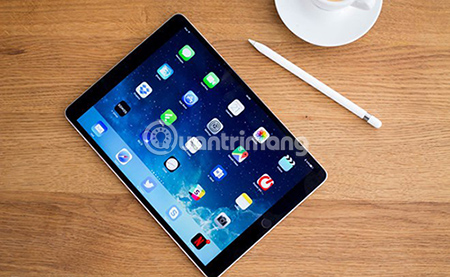
- CPU: Apple A10X Fusion 64-bit 6-core
- RAM: 4GB
- Screen: True Tone 10.5 inches with a resolution of 2734 x 2048
- Model: WiFi and WiFi + 4G
- Capacity: 64GB, 256GB, 512GB
- Model number: A1701 (WiFi), A1709 (4G)
Apple iPad Pro 10.5 came to WWDC 2017, along with a technical update for Apple iPad Pro 12.9. The IPad Pro 10.5 is designed to replace the 9.7-inch iPad Pro model of 2016, offering a 20% larger screen and 40% less bezel. These two models have many similar characteristics, including 4 speaker settings, Smart Connector and pink gold options.
Inside is the A10X Fusion processor and M10 motion co-processor, which is claimed to have a 30% increase in performance compared to A9 and 40% faster when processing graphics. The storage options include 64GB, 256GB and 512GB, compatible with Apple Pencil like the old 12.9-inch and 9.7-inch Pro models.
Apple iPad Pro 12.9 (2017)
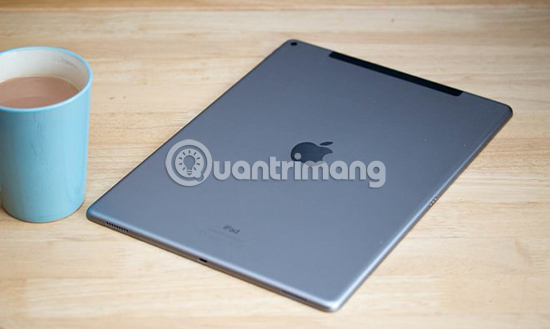
- CPU: Apple A9X 64-bit dual-core 2.26GHz
- RAM: 4GB
- Screen: 12.9 inches with a resolution of 2734 x 2048
- Model: WiFi and WiFi + Cellular
- Capacity: 32GB, 128GB, 256GB
- Model number: A1584 (WiFi), A1652 (4G)
Unlike Apple iPad Pro 10.5, the iPad Pro 12.9 update does not have a new design. The bezel edges, as well as its design and overall screen size remain the same (this causes a bit of disappointment). It's a big and heavy device, so many users want to see Apple take some improvements to make iPad Pro 12.9 easier to carry, such as reducing the bezel size as model 10.5.
The iPad Pro 12.9 inch update only sees internal upgrades. Replacing the A9X chip is the A10X Fusion processor - the same as found in the 10.5-inch model. The new 12.9-inch model also provides the same specifications and camera software as the 10.5-inch iPad Pro.
Apple iPad (2018)
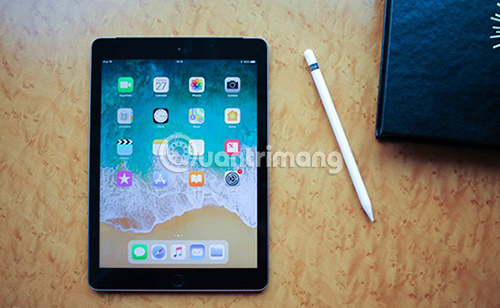
- CPU: Apple A10 Fusion 64-bit quad core 2.34 Ghz
- RAM: 2GB
- Screen: 2056 x 1536
- Model: WiFi and WiFi + 4G
- Capacity: 32GB, 128GB
- Model number: TBD
The standard 2018 iPad is designed as a successor version of the 2017 model, offering the same design as the iPad Air 2. It does not have a laminate screen and anti-reflective coating, but has support for the Apple Pencil generation. Firstly.
Apple iPad 2018 missed some of the iPad Pro's features, including True Tone and Smart Connector connectivity technology, as well as no pink gold options, but still significantly cheaper than Pro models, aimed at births. tablets. Apple iPad 2018 also raised the processor of the 2017 model to A10.
Apple iPad Pro 11 (2018)

- CPU: Bionic A12X Chip with Neural Engine
- RAM: 4GB (model 1TB including 6GB)
- Screen: 2388 x 1668
- Model: WiFi and WiFi + Cellular
- Capacity: 64GB, 256GB, 512GB, 1TB
- Model number: TBD
Apple iPad Pro 11 has appeared in 2018 but it is designed to "sit on par" with the iPad Pro 10.5 model and not an alternative. Offering a completely new design, iPad Pro 11 reduces borders Bezel and the first iPad model with Face ID Apple iPad Pro 11 also swapped the Lightning into USB Type-C.
The iPad Pro 11 has a Liquid Retina screen, offering 2388 x 1668 resolution and is compatible with Apple Pencil 2. It is also a bit more powerful than the 10.5-inch Pro model, with Bionic A12X processor, along with Optional 1TB model and improved camera.
Apple iPad Pro 12.9 (2018)
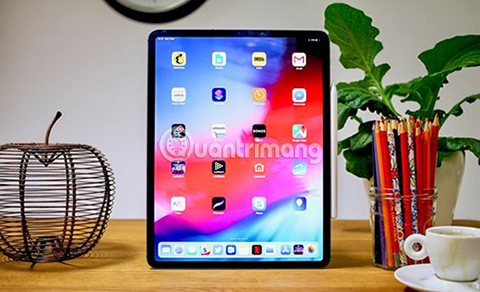
- CPU: Bionic A12X Chip with Neural Engine
- RAM: 4GB (model 1TB including 6GB)
- Screen: 2732 x 2048
- Model: WiFi and WiFi + Cellular
- Capacity: 64GB, 256GB, 512GB, 1TB
- Model number: TBD
Unlike the first update for the iPad Pro 12.9 inches, the second update was announced in 2018, making some major changes. Screen size changes from 305.7 x 220.6 x 6.9mm to 280.6 x 214.9 x 5.9mm.
The iPad Pro 12.9 2018 also reduced the weight by 44g, the Face ID replaced the Touch ID, Lightning was replaced by USB Type-C and supported the second generation Apple Pencil (meaning the stylus can attach magnetism to the edge of the iPad Pro 12.9) and wireless charging. A Liquid Retina screen was also introduced with rounded corners and Bionic A12X chips. The 1TB option is also available as a smaller 11-inch model.
 Experience cleaning mobile phones
Experience cleaning mobile phones How to fix Android error does not ring when a call is made
How to fix Android error does not ring when a call is made Cute wallpapers for smartphones
Cute wallpapers for smartphones How to upgrade iPad OS for iPad on computer
How to upgrade iPad OS for iPad on computer 10 applications to help 'cricket' control remote computers
10 applications to help 'cricket' control remote computers Download iOS 13, iPadOS and Mac Catalina wallpapers
Download iOS 13, iPadOS and Mac Catalina wallpapers